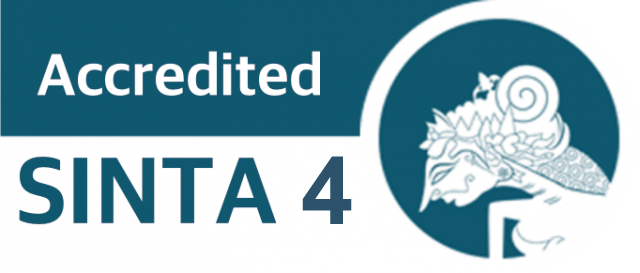Solution of the Sir Epidemic Model for the Spread of Tuberculosis Using the Fourth Order Runge-Kutta and Milne Method
DOI:
10.29303/jpm.v20i6.10083Published:
2025-10-09Issue:
Vol. 20 No. 6 (2025)Keywords:
Fourth-order Runge-Kutta Method; Milne method; SIR Model; Tuberculosis TransmissionArticles
Downloads
How to Cite
Downloads
Metrics
Abstract
Tuberculosis (TB) is an infectious disease of the human respiratory tract caused by the bacterium Mycobacterium tuberculosis (Mtb). The bacteria that cause TB are a type of bacillus bacteria that are very strong, so it takes a long time to treat this TB disease. This research is a literature study examining the mathematical model of SIR in TB disease. This research involves several stages, including the numerical integration of the SIR model, converting the resulting model into a computer programming language, performing numerical simulations, and observing solution graphs. This study aims to solve the SIR model of tuberculosis transmission using the fourth-order Runge-Kutta method and the Milne method. The resulting SIR model is a nonlinear differential equation model. The object of research in this study is the SIR Mathematical Model. The procedure for creating the SIR mathematical model consists of seven steps: case identification, establishing assumptions, creating the mathematical model, model analysis, model interpretation, model validation, and using the model. The research method employed is a literature study approach with a numerical component. Simulations were carried out twice for each method. The results of the numerical simulation in the MATLAB program show that both methods produce solutions with similar behaviour. However, in theory, the Milne method has a higher level of accuracy than the fourth-order Runge-Kutta method. The graph also shows that a population/individual suffering from tuberculosis will recover over time, assuming they undergo treatment or adopt a healthy lifestyle. The infection population will experience a decline towards an equilibrium point as time passes.
References
Suprapto, “Community Knowledge and Attitudes in Tuberculosis Prevention Efforts in the Batua Community Health Center Work Area, Makassar City,” Program Studi DIII Keperawatan Sandi Karsa Makassar, 2018. doi: https://doi.org/10.7454/bikfokes.v2i1.1023
S. D. Pralambang and S. Setiawan, “Faktor risiko kejadian tuberkulosis di Indonesia,” Jurnal Biostatistik, Kependudukan, Dan Informatika Kesehatan, vol. 2, no. 1, p. 5, 2021.
K. K. RI, “Melalui Kegiatan INA-TIME 2022 Ke-4, Menkes Budi Minta 90 % Penderita TBC dapat Terdeteksi di Tahun 2024.”
N. T. T. B. BPS, “Jumlah Kasus Penyakit Menurut Kabupaten/Kota dan Jenis Penyakit Jiwa.”
M. Resha, “Memprediksi Pola Penyebaran Penyakit Melalui Pemodelan Kasus Spasial-Temporal.,” Proposal Seminar Proposal Penelitian, 2017.
Y. B. Enkekes and L. Mardianto, “Metode runge-kutta orde 4 dalam penyelesaian persamaan gelombang 1D syarat batas dirichlet,” Indonesian Journal of Applied Mathematics, vol. 2, no. 1, pp. 1–8, 2022. doi: https://doi.org/10.35472/indojam.v2i1.489
M. Istiqomah, “Analisis Numerik Model Matematika pada kasus kecanduan Game Online menggunakan metode Runge Kutta Orde 14,” Program studi pendidikan matematika. Universitas Jember. SKRIPSI, 2020.
I. S. Sair, “Solusi Numerik Model Penyebaran pada Penyakit Hepatitis B di Provinsi Sulawesi Selatan Menggunakan Metode Runge-Kutta Orde Empat,” Universitas Negeri Makassar, 2018.
H. Amaludin, A. Faruk, and E. S. Cahyono, “Analisis Kestabilan Model Epidemik SIR untuk Penyakit Tuberkulosis,” Prosiding SEMIRATA Bidang MIPA, pp. 207–213, 2016.
R. U. Hurit and S. Mungkasi, “The Euler, Heun, and Fourth Order Runge-Kutta Solutions to SEIR Model for the Spread of Meningitis Disease: Penyelesaian Euler, Heun, dan Runge-Kutta Orde Empat atas Model SEIR pada Penyebaran Penyakit Meningitis,” Mathline: Jurnal Matematika dan Pendidikan Matematika, vol. 6, no. 2, pp. 140–153, 2021. doi: https://doi.org/10.31943/mathline.v6i2.176
H. Wijayanti, S. Setyaningsih, and M. Wati, “Metode runge kutta dalam penyelesaian model radang akut,” Ekologia: Jurnal Ilmiah Ilmu Dasar dan Lingkungan Hidup, vol. 11, no. 2, pp. 46–52, 2017.
M. M. K. O. Waton, R. U. Hurit, and W. M. Kelen, “Penyelesaian Model SITR pada Penyebaran Penyakit Diare dengan Metode Runge Kuta Orde Empat dan Metode Milne,” Jurnal Sistem Informasi, Teknik Informatika dan Teknologi Pendidikan, vol. 5, no. 1, pp. 113–118, 2025.
Jafaruddin, Mathematical Modeling 2nd Edition. Undana Press, 2020.
R. U. Hurit, “SEIR Model Solution for Meningitis Disease Distribution Using Euler Method, Heun Method and Fourth Order Runge-Kutta Method: Mathematical Review and Educational Aspects,” Universitas Sanata Dharma Yogyakarta, 2020.
M. Y. Bhoki, “Pemodelan penyebaran demam Dabi Afrika dan solusinya menggunakan metode Runge-Kutta Orde Empat dan metode Milne: Kajian matematika dan aspek pendidikan,” 2022.
L. Simangunsong, “Runge-Kutta Numerical Solution and Educational Aspects of the HIV-AIDS Distribution Model in the Susceptible, Infected, AIDS Cases (AIS) Type,” Universitas Sanata Dharma Yogyakarta, 2021.
A. K. Jamil, Y. Yulida, and M. A. Karim, “analisis kestabilan dan solusi numerik pada model seir untuk penyakit tuberkulosis,” EPSILON: JURNAL MATEMATIKA MURNI DAN TERAPAN, vol. 17, no. 1, 2023, doi: 10.20527/epsilon.v17i1.6403.
A. M. Nuhan, R. U. Hurit, and I. P. Muaraya, “Analisis Model Sleiqr Pada Penyebaran Penyakit Covid-19,” Jurnal Media Informatika, vol. 6, no. 4, pp. 2415–2422, 2025.
F. Maing, “Application of Euler and Heun’s Method in Solving the SEIR Model in the Spread of Dengue Fever: A Review of Mathematics and Educational Aspects,” IKTL, 2021.
W. Gao, P. Veeresha, C. Cattani, C. Baishya, and H. M. Baskonus, “Modified predictor-corrector method for the numerical solution of a fractional-order SIR model with 2019-nCoV,” Fractal and Fractional, vol. 6, no. 2, p. 92, 2022, doi: 10.3390/fractalfract6020092.
A. Atangana and S. İğret Araz, “Parametrized predictor-corrector method for initial value problems with classical and Caputo-Fabrizio derivatives,” International Journal of Geometric Methods in Modern Physics, p. 2440030, 2024, doi: 10.1142/S0219887824400309.
Author Biographies
Roberta Uron Hurit, Mathematics Education Department, Faculty of Teacher Training and Education, Institut Keguruan dan Teknologi Larantuka
Veronica Lapeng, Mathematics Education Department, Faculty of Teacher Training and Education, Institut Keguruan dan Teknologi Larantuka
Irwanius P. Muaraya, Mathematics Education Department, Faculty of Teacher Training and Education, Institut Keguruan dan Teknologi Larantuka
License
Copyright (c) 2025 Roberta Uron Hurit, Veronica Lapeng, Irwanius P. Muaraya

This work is licensed under a Creative Commons Attribution 4.0 International License.
The following terms apply to authors who publish in this journal:
1. Authors retain copyright and grant the journal first publication rights, with the work simultaneously licensed under a Creative Commons Attribution License 4.0 International License (CC-BY License) that allows others to share the work with an acknowledgment of the work's authorship and first publication in this journal.
2. Authors may enter into separate, additional contractual arrangements for the non-exclusive distribution of the journal's published version of the work (e.g., posting it to an institutional repository or publishing it in a book), acknowledging its initial publication in this journal.
3. Before and during the submission process, authors are permitted and encouraged to post their work online (e.g., in institutional repositories or on their website), as this can lead to productive exchanges as well as earlier and greater citation of published work (See The Effect of Open Access).











